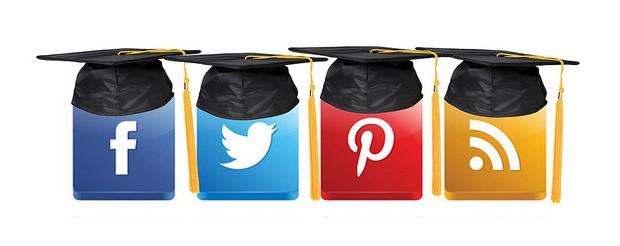How to Use Social Media as a Learning Tool
Social media have become a routine part of life. Merriam-Webster dictionary defines social media as “forms of electronic communication (as Web sites for social networking and microblogging) through which users create online communities to share information, ideas, personal messages, and other content (as videos).”
Though often used for leisure, social sites have increasingly become used for learning. Teachers can easily incorporate social media into their lesson plans to foster learning, collaboration and critical thinking in the classroom environment. You can use the following tips to apply the most popular social media as tools for learning.

Photo: Image credit to mkhmarketing on Flickr
The popularity of Facebook makes it an excellent tool for engaging students in lessons. Teachers can create a Facebook group for their classes and post class updates, assignments, learning material, reminders, and other information for their students. Facebook is also great in fostering collaborative learning, as students can post questions and comments about ongoing assignments, share their insights, and come up with innovative solutions. When notified of updates to the group, teachers and pupils can provide immediate feedback. Facebook also offers parents a way to monitor their children’s learning progress.
Twitter can engage students and keep them informed about news and other events from various academic and vocational fields. Teachers can create a dedicated feed for due dates, and reminders about tests and quizzes. They can also create lists for topics related to class for use with projects and assignments.
Students can tweet their contributions to the online conversation and provide concisely written observations that fit within Twitter’s limited character space. Students can use Twitter hashtags to help them find resources for their projects and other assignments. Twitter can help teachers and pupils coordinate tasks and collaborate with each other about their progress.
YouTube
As a social network centered on video, YouTube provides a platform for creating and accessing learning materials. Teachers can save their lectures or presentations to YouTube, so students can catch up from absences or review for tests and quizzes. With a set of Web-based video editing tools, teachers can create memorable learning experiences for their students.
Students can benefit from the many instructional videos already available on YouTube to augment their learning and provide additional study aids. Of course, the power of YouTube becomes apparent when students engage their creativity. As part of the learning effort, students can make videos that explain concepts, offer book reviews and discussions, reenact historical events, discuss news, and display art. YouTube offers an unlimited opportunity for students to explore their creativity in a fresh interactive environment that differs from traditional course material. Students can give and receive feedback in the form of comments, making it an excellent tool for collaboration and learning.
Education technology uses tools such as LinkedIn to change teaching practices, allowing educators to share and exchange ideas with their peers. Older students can use LinkedIn to learn valuable lessons such as how to create a resume. Students can also use LinkedIn to contact and follow influencers in certain fields as part of the effort perform research and acquire information for projects. LinkedIn has many groups, offering students an excellent way to learn more about people, companies, and industries. Students can upload their work to LinkedIn and use its professional environment to learn how the business world works.
Educators can use the social photo website, Instagram, to spark the creativity of students in surprising ways. By adding a visual component to their lessons, they can engage students on multiple learning levels. Teachers can also use the site to create virtual bulletin boards that display pictures of student’s work, arts and crafts, and posters. To introduce students to Instagram, teachers can have students post photos of people, places, and things that remind them of historical events, books, or concepts. Instagram has hashtag functionality that allows people to track their photos. The site also has a comment function that provides feedback.
Social media offers students and teachers many opportunities to make learning fun and efficient. The many options available for creative and engaging lessons creates a meaningful learning environment. Although educators must find ways to address privacy concerns, they cannot overlook the power social media has as a useful learning tool.
Author bio:
Patricia Dimick is a Denver-based freelance writer, stay-at-home mom and tech enthusiast. She likes to keep up with the exciting innovations in the digital world and share her insights with like-minded people. Feel free to reach her @Patricia_Dimick















